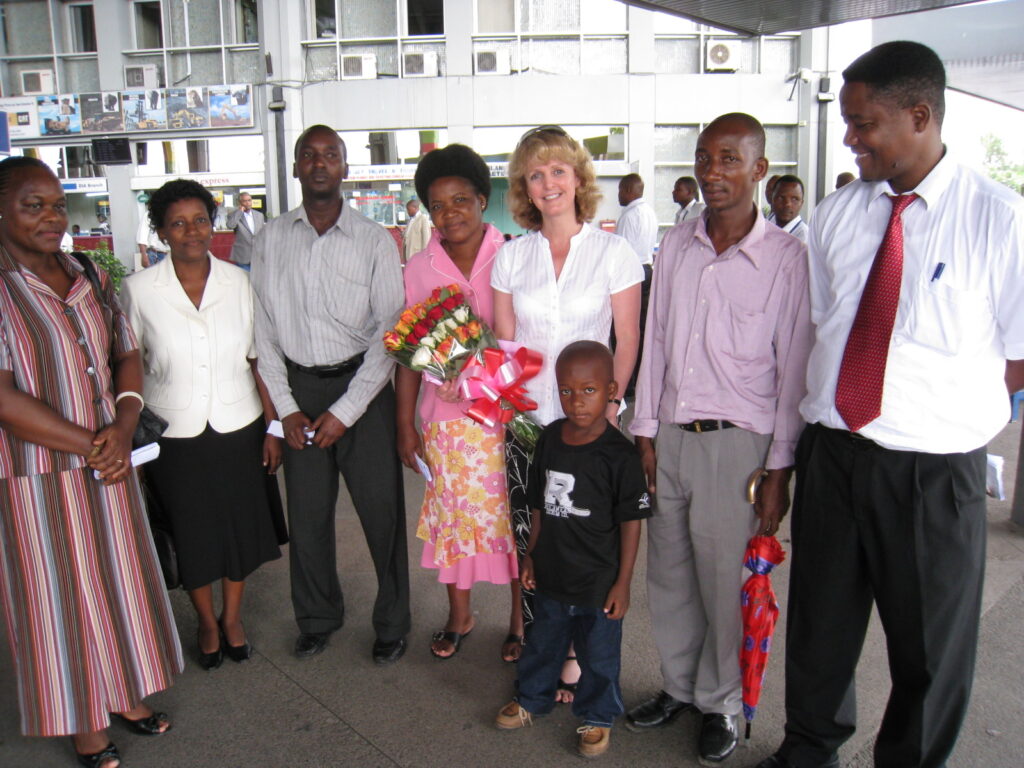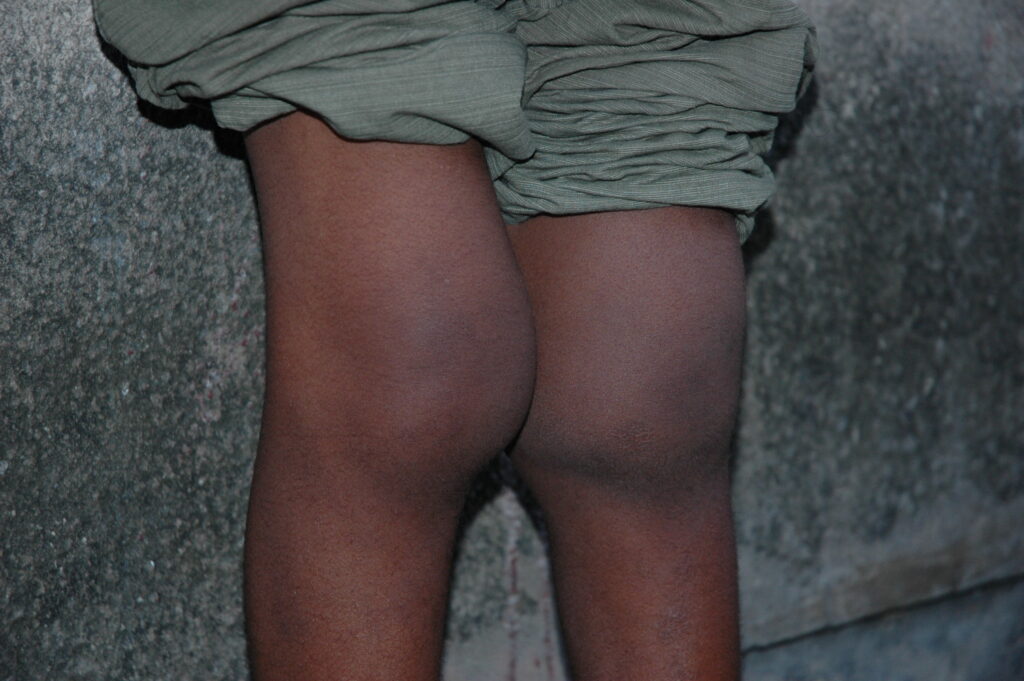You never know what to expect when you fly into a country you’ve never been to before. Never been to Tanzania before, and I only had two and a half days to assess the hemophilia situation: I mean, what can happen in two and a half days? What kind of time can it afford?

It’s enough time to make history.
I feel as though I have been here a lifetime, and have made lifelong friends. I am so, so proud of the Hemophilia Society of Tanzania and what they have accomplished so far. I admire every single one of them, for their determination, perseverance and compassion. We use these words lightly sometimes, but here, they are personified by Richard Minja, president of the society and whose brother Hepson has hemophilia; by Drs. James and Magesa; by hematology fellows Drs. Mukabi and Stella. It is a complete and humbling privilege to serve with them.
What is hemophilia like in Tanzania?
Imagine no factor concentrate — at all. And now imagine no cryo. Only FFP (for those of your from developed countries who forget what this is, it’s fresh frozen plasma, something used in the US a lifetime ago). And you must travel to the hospital with your child (with no crutches or wheelchairs available; just carry him on your back), which can take hours, as Dar es Salaam, the capital, has terrible traffic jams. You sit and sit in the heat, inching along. Public buses are overloaded, hot and sweaty. By the time you get to the hospital, the damage is mostly done. Many patients travel for days from other regions of the country. Remember, “This is Africa” (if you saw “Blood Diamond” you’ll get it) where not much is done quickly and where roads disappear, and mountains loom, and sudden rains drench you to the skin in a heartbeat.

But it is also a continent of breathtaking beauty, and of people warm and compassionate, for they know suffering, and are patient.
The hematologist here are great; I would trust my child with hemophilia to them at once. But they lack resources. The coagulation machines are broken so they cannot even properly diagnose their own patients. There are only 16 registered patients, when there may be about 3,000 countrywide. Of these, only 8 are confirmed in their factor deficiency. How do you practice medicine under such conditions?
What I loved about Tanzania most: the willingness of the new Society to do what it takes to help patients. I brought a donation of factor with me. Now, Project SHARE had donated factor before, but it actually sat unused in a remote Tanzanian hospital, because the medical staff were afraid to use it. It eventually went to Nairobi, Kenya, for a hospital there to use. When I gave the medical team at the Muhimbili National Hospital in Dar es Salaam about 20,0000 units, they wasted no time. 20-year-old Leonard Shimwella had been in the hospital about a week, getting FFP, which is slowly administrated, for a big knee bleed. Right away Dr. James prepared an injection. Somewhere between the prep and the injection we all realized history was being made: this was the first — repeat, the FIRST — Tanzanian with hemophilia ever to get an infusion of factor VIII within Tanzania. Incredible. Leonard was happy, but his joy couldn’t compare to ours. A barrier had been broken, a new door opened.

And as if that wasn’t enough we had a schedule to visit a family’s home. Faithful HemaBlog readers will know I never visit a country without spending time in the homes of the poor; how else are we to understand their needs?
So Monday evening we drove to the Keko slums, to visit Cecilia, and her 11-year-old son Cuthbert. I met Cecilia the day before, and she is a dignified, beautiful, refined woman. I imagined she lived in a nice flat, simple and sparse, but clean and well maintained.
Oh no. Her home is in a true slum, and here is what it looks like: dirt roads, with potholes brimming over with muddy rainwater; loud music blaring; people walking about; mosquitoes nipping our ankles (malaria is a #1 problem here); blocks of concrete, and rocks of all sizes obstructing the path; alleys and dirt squares; fear of being beheaded by the wire clotheslines strung everywhere, unseen in the dark; rivulets of muddy water streaming away. Total blackness… moonlight reflecting off the tin shanty roofs, and the stars overhead bursting with brilliance. I found myself staring in sadness and then awe. What does it take to live in such a place?
The slum turned out to greet us. And so did Cecilia and Cuthbert, and Cecilia’s sister Rose. You can’t imagine how three people live their lives in an 8′ by 8′ dwelling with no ventilation, shower, plumbing, or privacy. The lack of privacy alone might drive you mad. But there we were: Richard Minja, Dr. Zebediah Tilia, who is a friend of the family; and me. I took photos and then notes as I heard how Cecilia’s husband left her and his child; she is now a single mom with a child with hemophilia in a country with almost no care, earning about $3 a day (and that’s gross; there’s still rent and food and transport to be paid). And there was Cuthbert, with an active bleed. Dilemma time: what would you do?



Well, you infuse. And you go down in history a second time in a day for giving the first home infusion to a child in Tanzania. Does it get better than this?
I take no credit: Dr. Tilia did it all. How he found a vein in a dark-skinned child in the semi-dark is beyond me, and on the first stick! We were thrilled beyond words! Of course, Cuthbert was not so happy; it hurt!
Cuthbert really didn’t care a whole lot for me until I showed him my camera, and like all kids, he cracked the digital code pretty quickly and began snapping photos, smiling from ear to ear. We kidded and joked, and I asked Cecilia, how did she stay so lovely looking, when there was no place to prepare and nothing to prepare with? Dignity and beauty come from inside and one need only look at Cecilia to know this.
Stumbling back to the car, up cinder blocks, balancing on stones so as not to step in the treacherous puddles or twist an ankle, we happened upon a group of slum children who were delighted to see an American. They whooped it up, cheered and we all high-fived. I was passed an adorable one year old from a child of six, and cuddled him as the children war danced. It was glorious.
History made, and the start of something great in Tanzania, for we did more than infuse a child or two: we broke a century of tradition, of defeat, of mindset. As Dr. Tilia said at the meeting we had earlier: “This is a dream come true. This is a new future for Tanzania.” Changing mindsets is one of the most difficult things Hemophilia Leaders face, but it was done. Tanzania may not have much now, but they have one thing in their favor: a group of dedicated and young society members, not afraid to change the past and forge a new future, making history along the way. Congratulations to Richard Minja and his team!


2 thoughts on “Making History in Tanzania”
How does one register to the society? and is treatment easily available because i believe factor 8 infusion can be fairly expensive especially if the haemophilia is severe and one need regular treatment..is there insurance cover for this…? very aspiring inititive indeed.
Hi Anonymous,
Please contact me at laurie@kelleycom.com and I will send information. Tanzania subsists on donations of factor for now, which is an expensive treatment. Hope to hear from you… Laurie